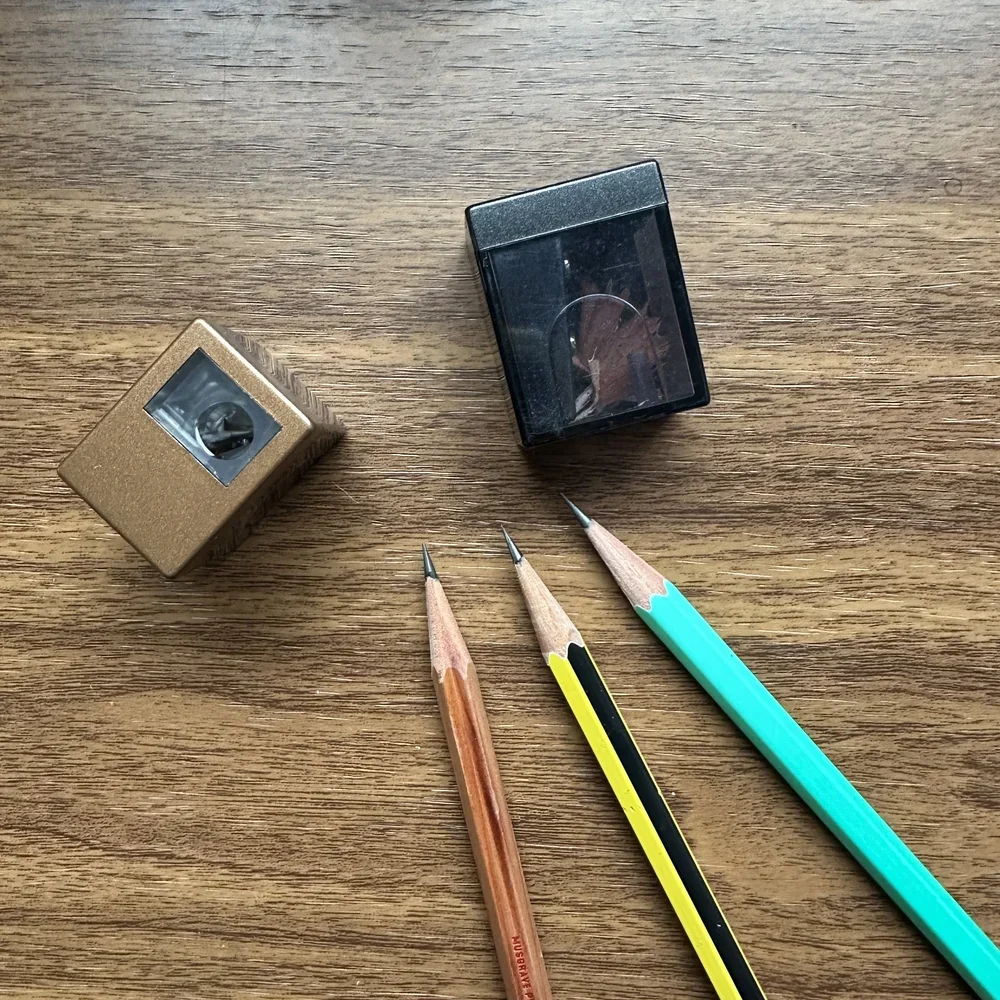We’ve been awaiting a huge restock of products from Japan, including in-demand items such as the NJK pencil sharpeners and Allex scissors in multiple sizes and finishes. We also have new Tomoe River notebooks and Journals from Karatis, including vegan leather versions with massive page counts, Caran d’Ache pencil restocks, and even a handful of Standard size Traveler’s Notebooks in Olive. (I don’t expect these to last long so get them while you can!)
We’re getting very close to Christmas and are shipping orders as quickly as we possibly can. Right now, we are within our usual 2-3 business day ship time, but we continue to encourage people to get orders that absolutely need to be delivered by Christmas or New Years in to us as soon as possible to account for any delivery delays. If you’re looking for gift ideas (including any last minute items), be sure to check out our Holiday Gift Guide, which we update every year!
Our Nashville shop is open this week from 1-6pm on Thursday and Friday, and from 10am-5pm on Saturday. (We plan to close an hour early on Saturday due to a personal commitment.) Check the shop page and on our Google profile for hours.
NJK Long-Point Pencil Sharpeners. These long-time T.G.S. favorites are imported directly from Osaka, Japan, and come in several different colors. Replacement blades are also available, though all sharpeners ship with a spare blade. You can read about why we enjoy these sharpeners here.
Blackwing Volume 21: The Woodworking Pencil. These unique pencils feature a square barrel plus a stained finish that still allows you to see the finger joints on the wood. The pencil is designed to work in standard sharpeners, including the excellent Blackwing sharpeners.
Allex S-165 Office Scissors. The classic Allex Scissors available with three different handles and fluorine-coated or stainless steel blades. (Fluorine is a teflon-like coating that helps cut through substances like tape and sticker paper.)
Allex Desk Scissors. These standard desk scissors also come in coated or non-coated blades and feature textured metal grips. This is my personal favorite model and use the standard stainless version in my office.
Allex Slim 100 Portable Scissors. These compact scissors are a great choice for a portable stationery kit, and available in either a standard stainless or blacked-out fluorine finish.
Exacompta Index Cards. These fountain pen friendly index cards come from the same paper mill as Clairefontaine and Rhodia paper, and come in multiple sizes and rulings. These are classic pieces of stationery that we’ve tried to keep in stock as staples.
Clairefontaine “My Essentials” A5 Notebooks. These were top sellers when we had them in the shop the first time around, and we finally got around to restocking. We have all cover colors available!
Herbin “Shogun” Ink. Way back when we first launched the store, we included this dark grey shimmer ink with an understated look. I’ve never been a huge proponent of shimmer, but it’s growing on me as I expand my range, and Shogun was one of the first that really appealed to me.
Lamy Bottled Ink. We have the full line of Lamy bottled ink back in stock, including Petrol, Sepia, and Dark Lilac.
Tom’s Studio Fountain Pen Ink. Tom’s Studio recently released several new ink colors, including a Clementine Orange, Espresso, and Sepia. These are warmer colors perfect for autumn and, soon, winter!
Blackwing Volume 21: The Woodworking Pencil
